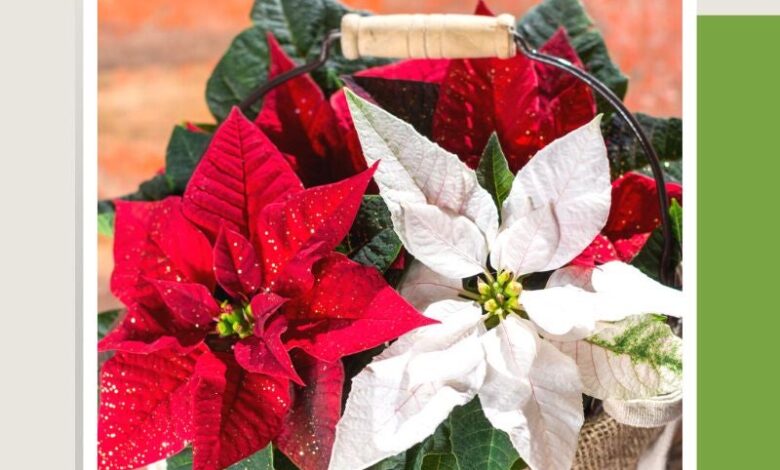
Poinsettia – The Ultimate Christmas Plant
[ad_1]
There is no plant I associate more with Christmas than poinsettia. Pine trees, evergreen garlands, and holly are all great, but the poinsettia is a staple of the holiday season. It’s classic mix of red and green is festive and beautiful.
A History of Poinsettia and Christmas
My personal history with poinsettia goes back as far as I can remember. It’s a plant I always saw around the holidays. Living in Michigan, this Mexican native wasn’t in anyone’s garden. It only appeared in winter as temporary houseplants.
The wider history of poinsettia as a Christmas decoration is much, much older. The simple answer for why these plants represent Christmas is the color scheme. Few plants have such a striking combination of holiday colors with the deep green leaves and bright red bracts surrounding the small flowers.
Poinsettias are native to Mexico and Central America. According to legend, a young girl picked weeds as the only gift she could afford to give the baby Jesus. When she left them at the nativity scene, they bloomed into the beautiful poinsettia we know today.
The real history likely begins with monks in Mexico in the 1600s who used poinsettias and other plants to decorate nativity scenes. The plant’s common name comes from a U.S. ambassador to Mexico, Joel Robert Poinsett, who brought the plants home in the 1800s. From that point on, they became popular holiday decorations.
Caring for a Christmas Poinsettia
Unfortunately for me, I can’t have poinsettia in the house. If you have a dog or cat that nibbles on plants, you may want to avoid it. Poinsettia is not as toxic as some have claimed in the past, but it can cause irritation and vomiting. If you have the chance to include poinsettia in your Christmas displays, know how to take care of this tropical plant:
- Poinsettia will not survive outdoors if temperatures drop below 50 degrees F. (10 C.). Indoors, they do best between 65 and 70 degrees F. (18-21 C.).
- Make sure your plants get several hours of bright window light.
- The soil in the container should always be moist. Don’t let it dry out but also be sure the pot drains, so you don’t get standing water.
- If you want to keep your poinsettia going after the holidays, keep watering it through winter. Transplant it to a larger container in spring. Provide a houseplant fertilizer when you see new growth on the plant, typically around January.
- Move the container outdoors for the summer and provide poinsettia with indirect light or partial shade. Put it in a spot with full sun toward the middle of summer.
- To force a poinsettia to rebloom the following year, you need to carefully provide darkness. Around the end of September, place the container in a completely dark location for at least 16 hours per day. Do this for a couple of months and it should be ready to produce more color for Christmas.
[ad_2]





